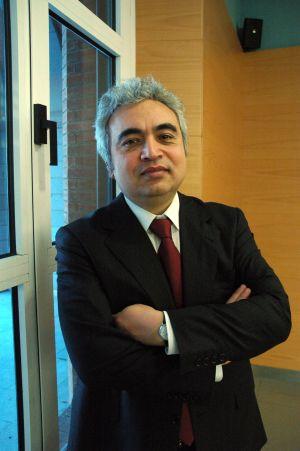In reading up on the IEA’s World Energy Outlook released today, I stumbled upon the most compelling and sobering picture of what it means to be energy poor in this world today. The excerpt comes from a the acceptance speech given by WOE director, Dr. Fatih Birol, in 2006. Read the whole speech here.
Energy Economics:
A Place for Energy Poverty in the Agenda?
Fatih Birol*
Unfortunately, the energy-economics community has given far less attention to the challenge of energy poverty amongst the world’s poorest people.
Over the past five years, less than 20% of the articles that have appeared in the major international energy journals have focused on developing countries, and only a tiny fraction of these have addressed energy-poverty issues. I would like to take this opportunity to appeal to all energy economists around the world to give more attention to this pressing issue.
The stark facts should give us all pause for thought. Today, 1.6 billion people in developing countries do not have access to electricity in their homes. Most of the electricity-deprived are in sub-Saharan Africa and south Asia. For these people, the day finishes much earlier than in richer countries for lack of proper lighting. They struggle to read by candle light. They lack refrigeration for keeping food and medicines fresh. Those appliances that they do have are powered by batteries, which eat up a large share of their incomes.
Another hallmark of energy poverty is the use of traditional biomass in unsustainable, unsafe and inefficient ways.
Currently, 2.5 billion people – 40% of the world’s population – rely on traditional biomass such as wood, agricultural residues and dung to meet virtually all their cooking energy needs. In many countries, these resources account for over 90% of all household energy consumption. These people live mainly in rural areas of Asia and Africa. The use of biomass is not in itself a cause for concern. But, in practice, it has a number of harmful consequences for health, the environment and economic and social development.
People, most often women and children, can spend many hours gathering such fuels. This reduces the time they can devote to more productive activities, such as farming and education. Wood gathering can also lead to deforestation, resulting in local scarcity of fuelwood and severe damage to the ecosystem. In addition, reliance on traditional biomass has a direct impact on human health. The World Health Organization estimates that each year, 1.3 million people – again, mostly women and children – in developing countries die as a result of fumes from indoor biomass stoves (WHO, 2006). Only malnutrition, HIV/AIDS and lack of clean water and sanitation are greater health threats.
Despite the prospect of continuing economic expansion and technological progress in the developing world, on current trends, 1.4 billion people will still lack electricity in 2030. That is barely 200 million less than today. Although 2 billion people will gain access to electricity during this period, this will be offset by rising world population. Most of the net fall in the number of electricity-deprived will occur in Asia; in Africa, their number will increase significantly. Furthermore, the number of people relying on traditional biomass for cooking and heating is also set to expand. In the absence of new policies, it will rise to 2.7 billion in 2030 – equal to one-third of the world’s population.
Dr. Fatih Birol really does put it into sobering perspective, doesn’t he?


